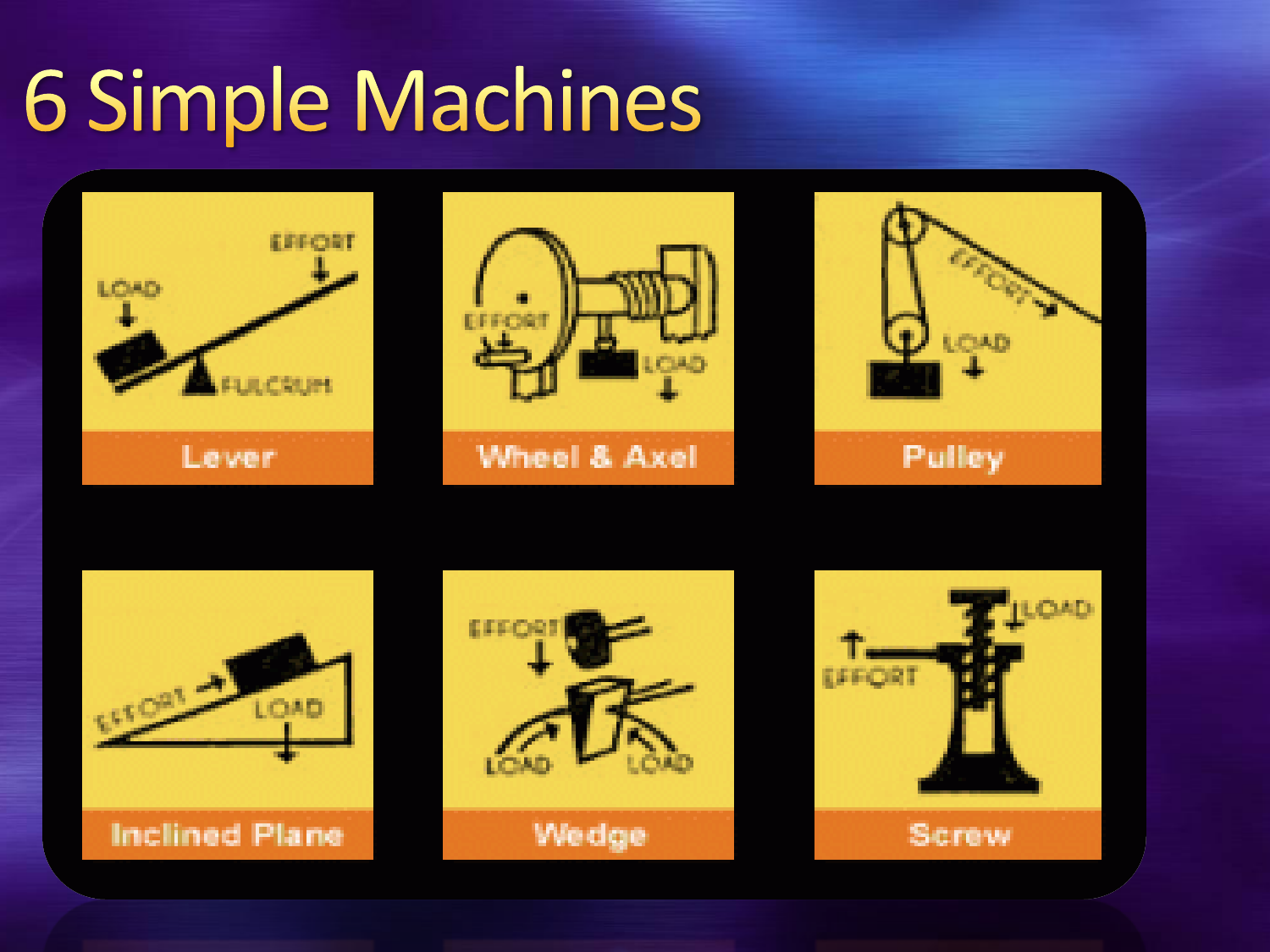Harnessing Simple Machines Support
Unleashing the Power of Simple Machines: A Comprehensive Guide
Simple machines are the unsung heroes of everyday life. From the humble lever to the intricate pulley system, these basic devices form the backbone of countless mechanical processes, making our lives easier and more efficient. In this comprehensive guide, we will delve deep into the world of simple machines, exploring their history, mechanics, and practical applications. Join us as we unravel the secrets behind these remarkable tools and discover how they can revolutionize the way we work and live.
Understanding the Basics: What are Simple Machines?
Before we can harness the power of simple machines, it is essential to understand what they are and how they work. Simple machines are basic mechanical devices that operate on fundamental principles of physics to multiply or redirect force. There are six primary types of simple machines:
- Lever: A rigid bar that pivots on a fulcrum to lift or move heavy objects.
- Wheel and axle: Consists of a wheel attached to a smaller axle, allowing for the transfer of force to create motion.
- Pulley: Utilizes a grooved wheel and rope to lift heavy loads with minimal effort.
- Inclined plane: A sloping surface that reduces the amount of force needed to raise an object.
- Wedge: A triangular-shaped tool used to split or lift objects by applying concentrated force.
- Screw: An inclined plane wrapped around a cylindrical shaft, used to fasten objects together or lift loads.
Each type of simple machine has unique characteristics and applications, but they all serve the common purpose of making work easier by altering the direction or magnitude of force.
The Evolution of Simple Machines: A Brief History
The concept of simple machines dates back thousands of years, with early civilizations utilizing rudimentary tools to accomplish tasks such as building structures, farming, and transportation. Ancient engineers and inventors, such as Archimedes and Leonardo da Vinci, made significant contributions to the development of simple machines, laying the groundwork for modern mechanical engineering.
During the Industrial Revolution, simple machines played a crucial role in transforming society by enabling mass production and mechanized agriculture. Innovations such as the steam engine and the cotton gin revolutionized manufacturing processes, leading to unprecedented economic growth and technological advancement.
Practical Applications: Where Simple Machines Shine
Simple machines are everywhere, quietly performing essential functions in our daily lives. From the door hinge that allows us to enter our homes to the gears in a bicycle that propel us forward, these humble devices are the building blocks of modern civilization. Some common applications of simple machines include:
- Construction: Cranes, bulldozers, and jackhammers rely on simple machines to lift heavy materials and excavate earth.
- Transportation: Automobiles, trains, and airplanes utilize gears, wheels, and axles to generate motion and control speed.
- Manufacturing: Conveyor belts, assembly lines, and robotic arms streamline production processes, increasing efficiency and reducing labor costs.
- Household: Door handles, scissors, and faucets incorporate simple machines to perform everyday tasks with ease.
Harnessing the Power of Simple Machines: Tips and Tricks
Now that we understand the basics of simple machines and their historical significance, let's explore some practical tips for harnessing their power in our daily lives:
Identify Opportunities: Look for tasks or processes in your work or home environment that could benefit from the use of simple machines. Whether it's lifting heavy objects or increasing mechanical advantage, there are countless opportunities to apply these principles.
Choose the Right Tool for the Job: Each type of simple machine has its strengths and limitations, so it's essential to select the appropriate device for the task at hand. Consider factors such as weight, distance, and desired outcome when choosing which simple machine to use.
Optimize Efficiency: Once you've implemented simple machines into your workflow, take steps to optimize their efficiency. Regular maintenance, lubrication, and proper alignment can extend the lifespan of your devices and maximize performance.
Experiment and Innovate: Don't be afraid to experiment with new ideas and innovations. Simple machines have been around for centuries, but there are still plenty of opportunities for creative problem-solving and invention.
Conclusion
In conclusion, simple machines are a fundamental aspect of our world, providing the mechanical advantage necessary to accomplish tasks both large and small. By understanding their principles and applications, we can harness the power of these remarkable devices to simplify our lives and drive innovation forward. So whether you're building a skyscraper, fixing a bike, or just opening a door, remember the timeless wisdom of the simple machine.




Comments
Post a Comment